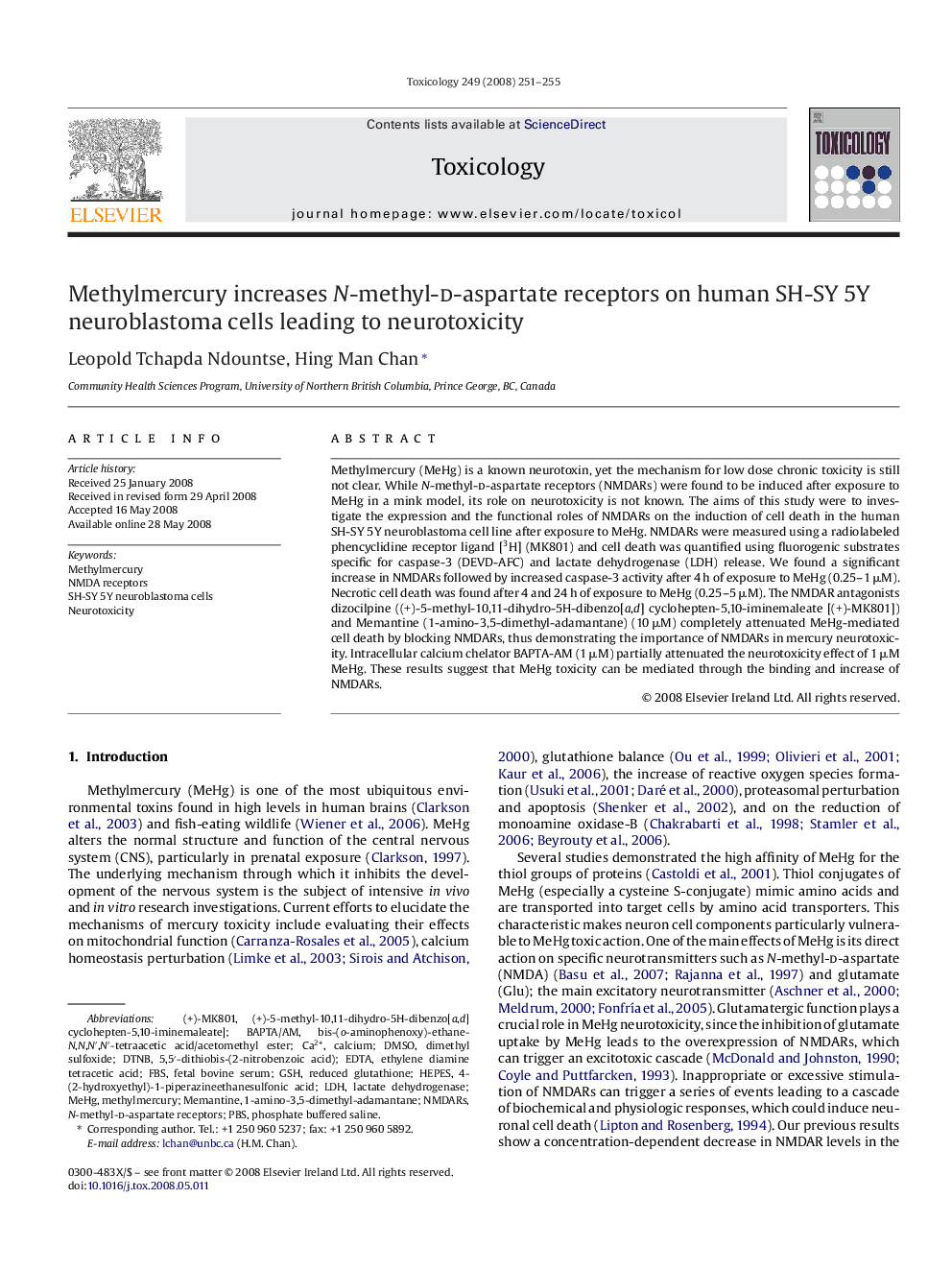| Article ID | Journal | Published Year | Pages | File Type |
|---|---|---|---|---|
| 2596979 | Toxicology | 2008 | 5 Pages |
Methylmercury (MeHg) is a known neurotoxin, yet the mechanism for low dose chronic toxicity is still not clear. While N-methyl-d-aspartate receptors (NMDARs) were found to be induced after exposure to MeHg in a mink model, its role on neurotoxicity is not known. The aims of this study were to investigate the expression and the functional roles of NMDARs on the induction of cell death in the human SH-SY 5Y neuroblastoma cell line after exposure to MeHg. NMDARs were measured using a radiolabeled phencyclidine receptor ligand [3H] (MK801) and cell death was quantified using fluorogenic substrates specific for caspase-3 (DEVD-AFC) and lactate dehydrogenase (LDH) release. We found a significant increase in NMDARs followed by increased caspase-3 activity after 4 h of exposure to MeHg (0.25–1 μM). Necrotic cell death was found after 4 and 24 h of exposure to MeHg (0.25–5 μM). The NMDAR antagonists dizocilpine ((+)-5-methyl-10,11-dihydro-5H-dibenzo[a,d] cyclohepten-5,10-iminemaleate [(+)-MK801]) and Memantine (1-amino-3,5-dimethyl-adamantane) (10 μM) completely attenuated MeHg-mediated cell death by blocking NMDARs, thus demonstrating the importance of NMDARs in mercury neurotoxicity. Intracellular calcium chelator BAPTA-AM (1 μM) partially attenuated the neurotoxicity effect of 1 μM MeHg. These results suggest that MeHg toxicity can be mediated through the binding and increase of NMDARs.
